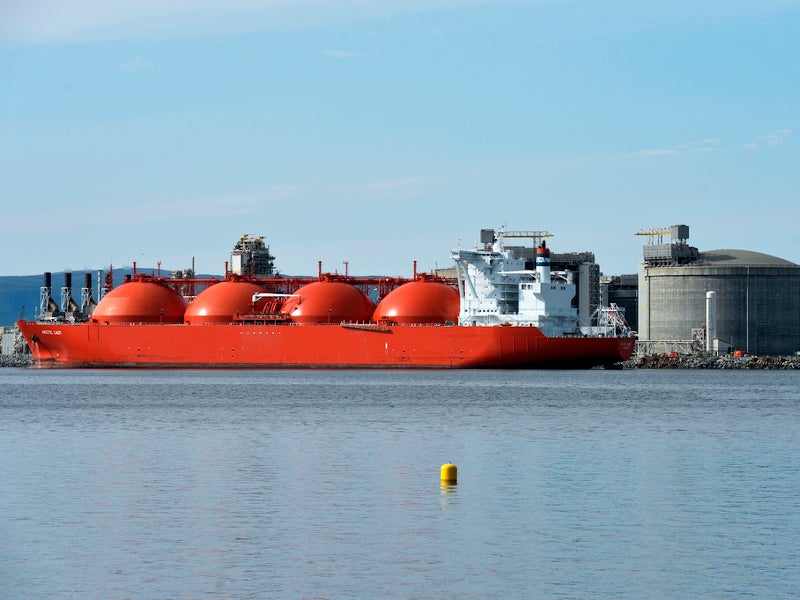The Snohvit gas and condensate field that has been producing since August 2007is the first offshore field development in the Barents Sea, Norway. It is currently undergoing new development to maintain its plateau production capacity.
Equinor Energy holds a 36.79% stake and is the operator of the field, while the other partners are Petoro (30%), Total E&P Norge (18.4%), Neptune Energy Norge (12%) and Wintershall Dea Norge (2.81%).
The Snohvit field was discovered in 1984 and the field development plan was approved by the Norwegian authorities in 2002.
The greaterSnohvit area that comprises three fields namely, Snøhvit, Albatross, and Askeladd, has been developed in multiple phases.
The Askeladd field, on which a final investment decision(FID) was taken in March 2018, is expected to start production from three wells in 2020.
According to the Norwegian Petroleum Directorate, the remaining reserves for the Snohvit development was estimated to be approximately 181 million cubic metres (mcm) of oil equivalent as of December 2019.
Location and reservoir
The Snohvit field is located in the Hammerfest Basin, approximately140km off the coast of Hammerfest in the southern Barents Sea. The water depth in the Snohvit field area rangesfrom250m to 345m.
The field’s reservoirs are located approximately 2,300m beneath the seabed and comprise the Nordmela and Sto sandstone formations of Lower and Middle Jurassic ages.
Snohvit field operation
The Snohvit field development comprises multiple subsea templates, manifolds, and wells. The well stream consists of natural gas, carbon dioxide, natural gas liquids (NGL) and condensate that are recovered through pressure depletion.
A 160km-long pipeline transports the field’s well stream to the Hammerfest onshore LNG plant.
Askeladd field development
The Askeladd field development, which is part of the multi-phased development plan for Snohvit, involves two subsea templates with three wells, and tie-in to the existing infrastructure of the Snohvit field.
The Askeladd field, located approximately 35km southwest of the Snohvit field, was discovered in 1981.
TheSnohvitproject partners agreed to invest approximately £460m ($640m) on the Askeladd field in March 2018.
A 44km-long, 20in-diameter pipeline will connect Askeladd to the Snohvit field. The project includes approximately 42km of umbilicals and a 35km-long mono-ethylene glycol (MEG) pipeline.
Scheduled to go on stream in late 2020, the Askeladd field is expected to produce approximately 21 billion cubic metres (Bcm) of gas and two million cubic metres of condensate.
The project partners are also planning to develop Askeladd Vest with two wells, a final investment decision (FID) on which was expected in 2020.
Hammerfest LNG plant
The Hammerfest LNG plant located on the Melkoya Island near Hammerfest is also operated by Equinor and has been producing since 2007. The facility has the capacity to produce 4.2 million tonnes (Mt) of LNG a year.
The natural gas, condensate, water, and carbon dioxide is separated from the well stream in the LNG plant. The natural gas is cooled and converted to liquid, while the carbon-dioxide is liquefied and injected back in a storage reservoir in the Snohvit field.
Contractors involved
Aker Solutions was contracted to provide subsea production systems and services for the Askeladd project in January 2018.
Subsea7 received a contract to construct a 44km-long and 20in-diameter pipeline from Askeladd to the Snohvit field in March 2018.
Ocean Installer was awarded a contract for the marine operations on the Askeladd project in March 2018. The contract scope includes the installation of two subsea templates.
TechnipFMC received a letter of intent for pipelaying and subsea installation for the Askeladd Vest project in June 2020.
Aker Solutions received a letter of intent to provide the subsea production system for the Askeladd Vest development in June 2020. The value of the contract is expected to be approximately £33.5m ($41.3m).





